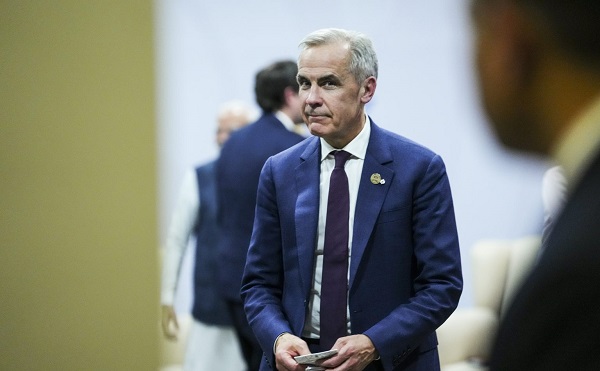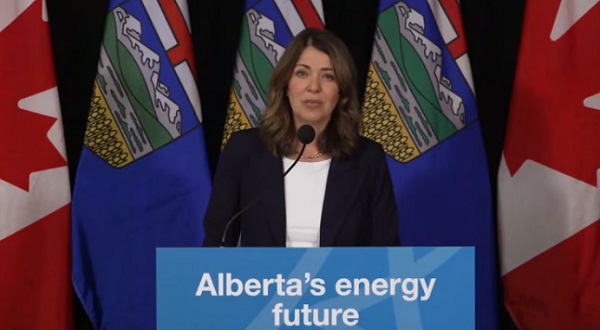Uncategorized
Trump ally Stone charged with lying about hacked emails

WASHINGTON — President Donald Trump’s confidant Roger Stone has been charged with lying about his pursuit of Russian-hacked emails damaging to Hillary Clinton’s 2016 election bid. Prosecutors allege that senior Trump campaign officials sought to leverage the stolen material into a White House win.
The self-proclaimed dirty trickster, arrested by the FBI in a raid before dawn Friday at his Florida home, swiftly blasted the prosecution as politically motivated. In a circus-like atmosphere outside the courthouse, as supporters cheered him on and jeering spectators shouted “Lock Him Up,” Stone proclaimed his innocence and predicted his vindication.
“As I have said previously, there is no circumstance whatsoever under which I will bear false witness against the president, nor will I make up lies to ease the pressure on myself,” Stone said.
The seven-count indictment , the first criminal case in months in special counsel Robert Mueller’s investigation, provides the most detail to date about how Trump campaign associates in the summer of 2016 actively sought the disclosure of emails the U.S. says were hacked by Russia and then provided to the anti-secrecy
Stone is the sixth Trump aide or adviser charged by Mueller and the 34th person overall. The nearly two-year-old probe has exposed multiple contacts between Trump associates and Russia during the campaign and transition period and revealed efforts by several to conceal those communications.
The indictment brings the investigation even further into Trump’s circle of advisers and suggests campaign officials were eager to exploit the stolen messages for political gain. But prosecutors did not accuse Trump of wrongdoing or charge Stone with conspiring with WikiLeaks or with the Russian intelligence officers Mueller says hacked the emails. They also did not allege that Trump aides knew in advance of the hacking.
The prosecution mirrors other Mueller cases in alleging
Trump attorney Jay Sekulow said the indictment “does not allege Russian collusion by Roger Stone or anyone else.” Trump himself on Friday called the investigation the “Greatest Witch Hunt in the History of our Country!”
CNN aired video of the raid at Stone’s home in Fort Lauderdale, Florida, showing agents in body
“FBI open the door!” one shouts. “FBI, warrant!” Stone could then be seen in the doorway in his sleepwear before he was led away.
Though not uncommon for the FBI to make early-morning arrests of targets under indictment, it’s the first time Mueller has used that tactic. In court papers, prosecutors wrote they had concerns that if Stone was tipped off to the indictment, it would increase the risk he would flee or destroy evidence.
Hours after his arrest, Stone appeared in court in a blue polo shirt and jeans. In releasing him on $250,000 bond, a magistrate judge restricted Stone’s travel to South Florida, Washington and New York City and ordered him to avoid contact with witnesses. He’s due Tuesday in a court in Washington, where the case was filed.
“This morning, at the crack of dawn, 29 FBI agents arrived at my home with 17 vehicles, with their lights flashing, when they could simply have contacted my attorneys and I would have been more than willing to surrender voluntarily,” Stone said outside court.
Known for his political antics, conspiracy theories and hard-ball tactics, Stone has reveled in being a Washington wheeler-dealer dating back to former President Richard Nixon’s administration. On Friday, he mimicked Nixon’s famous “V” gesture as he left the courthouse.
Stone, a longtime friend of the president’s, briefly served on Trump’s campaign, but was pushed out amid infighting with then-campaign manager Corey Lewandowski. Though sidelined, he continued to communicate with Trump and stayed plugged into his circle of advisers.
The indictment says Stone repeatedly discussed WikiLeaks in 2016 with campaign associates and lays out in detail Stone’s conversations about emails stolen from Clinton campaign chairman John Podesta and posted in the weeks before Trump beat Clinton.
The document says that by June and July 2016, Stone had told senior Trump campaign officials that he had information indicating that WikiLeaks had obtained damaging documents on Clinton.
After WikiLeaks on July 22, 2016, released hacked emails from the Democratic National Committee, the indictment says, a senior Trump campaign official “was directed” to contact Stone about additional releases and “what other damaging information” WikiLeaks had “regarding the Clinton campaign.” The indictment does not name the official or say who directed the outreach to Stone.
Though no officials are identified by name, one Trump campaign aide cited in the case is Steve Bannon, who later became Trump’s chief White House strategist. Bannon, referred to as a “high-ranking Trump Campaign official,” exchanged emails with Stone in October 2016 about WikiLeaks’ plans. The indictment quotes from those emails, which had previously been made public by news outlets.
While the indictment provides some new insight into the Trump campaign, it deals largely with what prosecutors say were Stone’s false statements about his conversations about WikiLeaks with New York radio host Randy Credico and with conservative writer and conspiracy theorist Jerome Corsi, who rejected a plea offer from Mueller last year.
The indictment says Stone carried out a “prolonged effort” to keep Credico from contradicting his testimony before the House intelligence committee. During that effort, prosecutors note that Stone repeatedly told Credico to “do a ‘Frank Pentangeli,'” a reference to a character in “The Godfather: Part II” who lies before Congress.
Stone is accused of threatening Credico, including through messages in which he called him “rat” and “stoolie.” He also threatened to “take that dog away from you,” a reference to Credico’s dog, Bianca.
“I am so ready. Let’s get it on. Prepare to die (expletive),” Stone also wrote to Credico.
Stone has said for months he was prepared to be charged, while maintaining he had no inside information about the contents of the emails obtained by WikiLeaks or the timing of their release.
Still, he has long attracted scrutiny because of his WikiLeaks-related comments, especially a 2016 tweet — “Trust me, it will soon (be) the Podesta’s time in the barrel” — that appeared to presage knowledge that Podesta’s emails would soon be released.
In a tweet Friday, Podesta turned Stone’s words against him, writing that it was now “Roger’s time in the barrel.”
___
Read the indictment: http://apne.ws/1P23qpR
___
Associated Press writers Michael Balsamo in Washington, Jennifer Kay in Miami and Terry Spencer and Kelli Kennedy in Fort Lauderdale, Florida, contributed to this report.
Eric Tucker And Chad Day, The Associated Press
Uncategorized
Cost of bureaucracy balloons 80 per cent in 10 years: Public Accounts

The cost of the bureaucracy increased by $6 billion last year, according to newly released numbers in Public Accounts disclosures. The Canadian Taxpayers Federation is calling on Prime Minister Mark Carney to immediately shrink the bureaucracy.
“The Public Accounts show the cost of the federal bureaucracy is out of control,” said Franco Terrazzano, CTF Federal Director. “Tinkering around the edges won’t cut it, Carney needs to take urgent action to shrink the bloated federal bureaucracy.”
The federal bureaucracy cost taxpayers $71.4 billion in 2024-25, according to the Public Accounts. The cost of the federal bureaucracy increased by $6 billion, or more than nine per cent, over the last year.
The federal bureaucracy cost taxpayers $39.6 billion in 2015-16, according to the Public Accounts. That means the cost of the federal bureaucracy increased 80 per cent over the last 10 years. The government added 99,000 extra bureaucrats between 2015-16 and 2024-25.
Half of Canadians say federal services have gotten worse since 2016, despite the massive increase in the federal bureaucracy, according to a Leger poll.
Not only has the size of the bureaucracy increased, the cost of consultants, contractors and outsourcing has increased as well. The government spent $23.1 billion on “professional and special services” last year, according to the Public Accounts. That’s an 11 per cent increase over the previous year. The government’s spending on professional and special services more than doubled since 2015-16.
“Taxpayers should not be paying way more for in-house government bureaucrats and way more for outside help,” Terrazzano said. “Mere promises to find minor savings in the federal bureaucracy won’t fix Canada’s finances.
“Taxpayers need Carney to take urgent action and significantly cut the number of bureaucrats now.”
Table: Cost of bureaucracy and professional and special services, Public Accounts
| Year | Bureaucracy | Professional and special services |
|
$71,369,677,000 |
$23,145,218,000 |
|
|
$65,326,643,000 |
$20,771,477,000 |
|
|
$56,467,851,000 |
$18,591,373,000 |
|
|
$60,676,243,000 |
$17,511,078,000 |
|
|
$52,984,272,000 |
$14,720,455,000 |
|
|
$46,349,166,000 |
$13,334,341,000 |
|
|
$46,131,628,000 |
$12,940,395,000 |
|
|
$45,262,821,000 |
$12,950,619,000 |
|
|
$38,909,594,000 |
$11,910,257,000 |
|
|
$39,616,656,000 |
$11,082,974,000 |
Uncategorized
Trump Admin Establishing Council To Make Buildings Beautiful Again


From the Daily Caller News Foundation
By Jason Hopkins
The Trump administration is creating a first-of-its-kind task force aimed at ushering in a new “Golden Age” of beautiful infrastructure across the U.S.
The Department of Transportation (DOT) will announce the establishment of the Beautifying Transportation Infrastructure Council (BTIC) on Thursday, the Daily Caller News Foundation exclusively learned. The BTIC seeks to advise Transportation Secretary Sean Duffy on design and policy ideas for key infrastructure projects, including highways, bridges and transit hubs.
“What happened to our country’s proud tradition of building great, big, beautiful things?” Duffy said in a statement shared with the DCNF. “It’s time the design for America’s latest infrastructure projects reflects our nation’s strength, pride, and promise.”
“We’re engaging the best and brightest minds in architectural design and engineering to make beautiful structures that move you and bring about a new Golden Age of Transportation,” Duffy continued.
Mini scoop – here is the DOT’s rollout of its Beautifying Transportation Infrastructure Council, which will be tasked with making our buildings beautiful again. pic.twitter.com/
9iV2xSxdJM — Jason Hopkins (@jasonhopkinsdc) October 23, 2025
The DOT is encouraging nominations of the country’s best architects, urban planners, artists and others to serve on the council, according to the department. While ensuring that efficiency and safety remain a top priority, the BTIC will provide guidance on projects that “enhance” public areas and develop aesthetic performance metrics.
The new council aligns with an executive order signed by President Donald Trump in August 2025 regarding infrastructure. The “Making Federal Architecture Beautiful Again” order calls for federal public buildings in the country to “respect regional architectural heritage” and aims to prevent federal construction projects from using modernist and brutalist architecture styles, instead returning to a classical style.
“The Founders, in line with great societies before them, attached great importance to Federal civic architecture,” Trump’s order stated. “They wanted America’s public buildings to inspire the American people and encourage civic virtue.”
“President George Washington and Secretary of State Thomas Jefferson consciously modeled the most important buildings in Washington, D.C., on the classical architecture of ancient Athens and Rome,” the order continued. “Because of their proven ability to meet these requirements, classical and traditional architecture are preferred modes of architectural design.”
The DOT invested millions in major infrastructure projects since Trump’s return to the White House. Duffy announced in August a $43 million transformation initiative of the New York Penn Station in New York City and in September unveiledmajor progress in the rehabilitation and modernization of Washington Union Station in Washington, D.C.
The BTIC will comprise up to 11 members who will serve two-year terms, with the chance to be reappointed, according to the DOT. The task force will meet biannually. The deadline for nominations will end Nov. 21.
-

 Artificial Intelligence2 days ago
Artificial Intelligence2 days ago‘Trouble in Toyland’ report sounds alarm on AI toys
-

 Daily Caller2 days ago
Daily Caller2 days agoTom Homan Predicts Deportation Of Most Third World Migrants Over Risks From Screening Docs
-

 Energy2 days ago
Energy2 days agoCanadians will soon be versed in massive West Coast LPG mega-project
-

 National1 day ago
National1 day agoMedia bound to pay the price for selling their freedom to (selectively) offend
-

 Business7 hours ago
Business7 hours agoCanada’s future prosperity runs through the northwest coast
-

 Brownstone Institute1 day ago
Brownstone Institute1 day agoThe Unmasking of Vaccine Science
-

 Censorship Industrial Complex43 mins ago
Censorship Industrial Complex43 mins agoA Democracy That Can’t Take A Joke Won’t Tolerate Dissent
-

 armed forces1 day ago
armed forces1 day agoGlobal Military Industrial Complex Has Never Had It So Good, New Report Finds










